Breaking: The Syrian Crisis in the Context of History and the Future
Article by Galima Galiullina, Ph. D., published on April 11, 2018, on Veterans Today website.
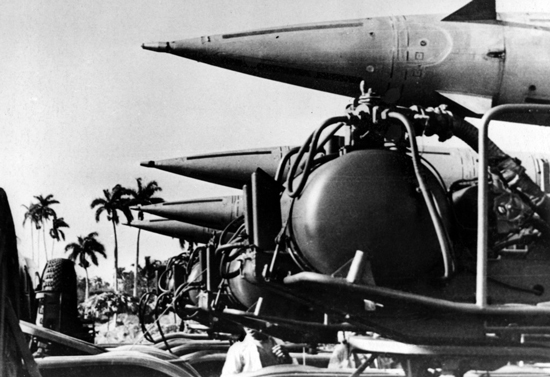
Faced with a crisis of this magnitude at another time, the United States and Russia were brought to the brink of war but somehow survived. Relations at that time were heavily strained and diplomatic efforts on both sides failed to avert looming confrontation. How was it then that war was avoided? And, is there a lesson from that time giving hope to our present crisis?
The confrontation of global players around long-suffering Syria has escalated to the point of explosion with unpredictable consequences, but even now it is not too late to understand the expectations of the opposing sides and the motivations of the participants in the conflict. Only in this way we can hope that we will be preserved on this planet as a community of civilized beings.
The absurd and crazy behavior of those who, at the beginning of this century, represented the elite of the world order is explained by the agonizing delusion of the end of the old world, built according to the laws of predatory capitalism and global liberalism, the impossibility for the world’s masters to reconcile with the loss of power and the total impotence of its puppet leaders.
The Russians, who do not lose the presence of the Spirit in such an extreme situation, joke rather gloomily: “Bill Clinton began bombing Yugoslavia to put out a scandal with Monica Lewinsky. Trump is going to destroy Syria, so that the nation does not notice a scandal about the connection with a porn star. Maybe for the safety of the world it will be better to castrate them?”
Let us turn to the history of similar crises, first in terms of the degree of danger of the Cuban crisis, now 56 years past, then to the present conflict similar in sharpness and horror.
Cuba – 1962
I’m not sure that many of you remember the name of Batista, but it was this man who laid the foundation for the Cuban revolution. Between 1940-1944 he was the legally elected president of Cuba. After losing in the next election, he begins to look for other ways to return to power and eventually renews ties to Meyer Lansky, the financial boss of the American mafia.
It was Lansky who dedicates Batista to the grandiose plans for perestroika in Cuba. With Lansky’s help, Batista forms a conspiracy to seize power with help of the Cuban military. He tried to win the election but, finding himself last in the polls three months before election day, Batista carried out an armed seizure of power in March 1952.
The experience of Trotsky in rallying criminal authorities with the corrupt part of the army came in handy and Batista went on to become rich and famous. Thanks to close ties to organized crime in the US, dictator Batista quickly turned one of the five prosperous countries of Latin America into a brothel, where 11,000 prostitutes worked in Havana alone.
The flow of drugs flooded the country, cocaine and marijuana could be bought as simply as a glass of rum. Casinos, hotels, brothels grew like mushrooms after the rain. The world “elite” loved to have fun on an exotic island where the state was corrupt to the core, unafraid scandals would be managed by police and a compliant press.
Enchanting Cuba as a stronghold of voluptuous pleasures, prompted one of the lovers of the island to write: “Havana is a mistress of pleasure, a lush and opulent goddess of the light”. The Russians remember Moscow in the 90s – also became a pleasure magnet for bandits and politicians serving them. So was Berlin after the Great War in the 1920s, and as the current Ukraine.
The population of Cuba was rapidly impoverished. Before the arrival of the junta to power, two-thirds of Cubans were middle class. Under Batista, 40% of sugarcane plantations were given to Americans, 90% of mines and mineral resources, 80% of communal services, 50% of railways also left for new owners – American companies. Trotsky would have been proud of Lansky’s achievement. It was Florida’s mafia paradise. Lucky Luciano, one of the most odious criminals, resettled in Cuba instead of returning to Sicily, as ordered by an American court, resuming his role managing Lansky’s interests.
And this paradisiacal life for criminals and rich lovers of voluptuousness suddenly ends as a result of the victory of a group of young officers led by charismatic leaders of the revolution – Fidel Castro and Che Guevara. Fidel Castro at that time was already a doctor-of-law and a well-known politician, a fighter for the rights of Cubans.
Two years of guerrilla warfare against the Batista regime led the Rebel army to power. Since January 1959, Castro steadily led Cuba until he retired in 2008, he escaped death more than 600 times and assassination attempts have enveloped him with the legend of an invulnerable hero.
The US was not going to put up with Castro’s rebels and the loss of insane income from all casinos, hotels, mines, brothels and plantations. Even before retiring, US President Dwight Eisenhower in 1959 instructed the CIA to hire 1,400 runaway Cubans to overthrow Castro. The mercenaries were armed and trained by special services instructors in 7 camps in Guatemala. General leadership was entrusted to CIA Director Allen Dulles. To prepare for a military invasion of Cuba, efforts were made to revitalize the actions of the Cuban fifth column (a group within a country at war who are sympathetic to or working for its enemies), including acts of arson on department stores.
With the change of power in the US, CIA plans to eliminate Castro and bring the “more supportive to the US” figures to power did not change, the military invasion plan was still on course, but Kennedy preferred conducting guerrilla warfare and activating the fifth column.
Operation Zapata in the Gulf of Pigs in April 1961 ended in failure, but the desire to overthrow the hated Castro did not leave either the CIA or the State Department. And the main contradiction between the participants of the conspiracy remained the same – the choice between a direct act of aggression or the slow disintegration of Cuban society.
The Cuban Missile Crisis – October 1962
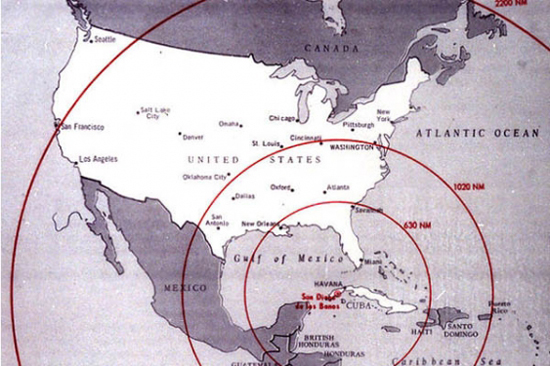
The crisis of 1962 included three sides – the US, Cuba and the USSR. Leadership was represented by three bright figures. John Kennedy, the youngest and most charismatic president of America, a symbol of hope for change.
Fidel Castro, the leader who managed to inspire his people with the belief in victory in the struggle for the dignity of the nation, for justice and equality and aversion to the society of consumption. Behind him was the story of victory and courage, prison and emigration, the experience of guerrilla warfare with a powerful enemy.
Nikita Khrushchev, whom society showered full confidence, inspired by the victories in the building of socialism, proud in the first flight into space in the history of mankind, an incomparably pure generation of winners not subject to vices. Khrushchev, however, had a score to settle with the Americans, connected with the failure of Eisenhower’s planned visit to the USSR. After a trip to the US and getting acquainted with the achievements of capitalism, Nikita Khrushchev planned the development of economic partnerships. To adequately meet a very welcome guest, even the construction of the first golf club was started in the USSR!
This was all to fall apart over the skies of Ekaterinburg on May 1, 1960. Shot in the sky over the Sverdlovsk, Gary Powers’ U-2 broke these hopes.
The disgrace of the failure of Operation Zapata was keen and Kennedy did not forgive Dulles and fired the CIA boss. Promising to smash the CIA into thousands of fragments, the president reformed the power structures. While control of certain military aviation in the United States was undergoing a transfer from the CIA to the Navy, leaving the situation in the Caribbean region out of control, the Soviet military managed to quickly and secretly deliver missiles and launchers to Cuba and station them on the island 90 miles away Florida.
This was a response both to the needs of the USSR to ensure parity in the availability of medium-range missiles after the deployment of American missiles to Turkey and Italy. Comparable range of missiles from Turkey to Moscow – 2,106 km, and from Cuba to Washington – 1,826 km seemed reasonable to Cubans and Russians. Placing missiles also addressed Castro’s request to help protect the first country of socialism in Latin America.
Intelligence reported on missile installations in Cuba and the crisis began to increase with every minute. The generals insisted on an immediate attack on Cuba. Kennedy did not a support direct aggression. He understood the danger of a war in which Russians with a nuclear baton directly under the Americans nose would participate.
Two Russians and One American Who Saved the World
In October 1962, the world survived for 14 days the most acute crisis of relations between the two nuclear powers, which almost led to a complete catastrophe. On October 14, US intelligence discovered Soviet nuclear missiles in Cuba, ready for launch. Liberty Island (Cuba) was surrounded and blocked immediately by US ships, ready to attack with rockets and bombers, Soviet missile systems were served by 1,400 Russian military personnel. The people of Florida fled in panic into the countryside, in Washington people stocked their own shelters.
From memoirs of a participant of the Cuban epic, Felix Sukhanovsky, at that time a sergeant stationed in Cuba: “We did not feel the whole tension of the situation, although we understood that the launch of only one R-12 – and the world hell will begin. Each missile with a capacity of one megaton is able to destroy 50 Hiroshima. Cubans, seeing our power, cheerfully persuaded: ‘Comrade-comrade, push-push, let rocket fly! Show these Americans!’ Strongly offended that we do not smite our club in the States. Order was not yet. And we waited.”
But everything was solved by a couple of meetings between two people in the Washington restaurant Occidental near the White House. Since demolished and relocated nearby, on one of the tables of the rebuilt café you can still find a brass tablet with several lines on the metal: “During the stressful period of the Caribbean crisis (October 1962), the mysterious Russian, Mr. X conveyed a proposal to remove missiles from Cuba to the correspondent of the ABC television, John Scalli: This meeting served to eliminate a possible nuclear war.”
Next to the sign is a portrait of the correspondent. But there is no portrait of the resident of Soviet political intelligence in Washington, Alexander Fomin.
His real name was Alexander Semenovich Feklisov. Possessing excellent abilities to establish the right connections, Fomin made friends with John Scalli, who in turn was a close friend of Robert Kennedy. On one of the days of the conflict, Scalli invited Fomin to the Occidental restaurant. The meeting was short-lived, and Scalli was very angry with Khrushchev, whom he accused of aggressive behavior.
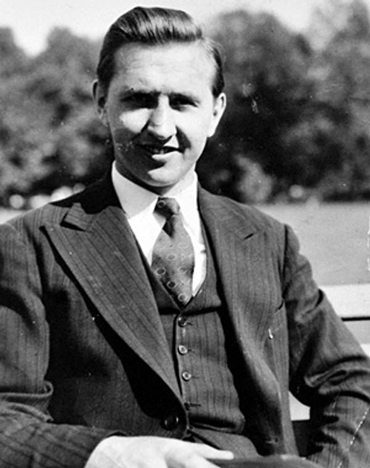
Alexander Semenovich Feklisov, 1960s
On October 22, President Kennedy addressed the nation in a live television broadcast. His ultimatum demands to Moscow were presented in this speech. On the morning of October 26, Fomin decides to invite Scalli to lunch at the same restaurant in the hope of receiving fresh information from him. In the book Danger and Survival, McGeorge Bundy (US National Security Adviser) will write later that the upcoming meeting between Scalli and the Soviet intelligence officer was reported to the president.
Through Scalli, Kennedy told Fomin: “Time does not stand, the Kremlin must urgently make a statement of its consent without any conditions to withdraw its missiles from Cuba.”
The memory of the Russian kept this meeting in full detail, and Alexander Feklisov wrote about it in his book Recognition of a Scout:
“Rubbing his hands and smiling at me, Scalli said:
– Khrushchev, apparently, considers Kennedy a young, inexperienced statesman. He is deeply mistaken, though he is convinced. The Pentagon assures the President that in forty-eight hours he will be able to end the regime of Fidel Castro and Soviet missiles.
I replied:
– The invasion of Cuba is tantamount to giving Khrushchev freedom of action. The Soviet Union can strike back at a place vulnerable to Washington.
Scalli, apparently, did not expect such an answer. He looked at me for a long time in the eye.
Then he asked:
– Do you think, Alexander, will this be West Berlin?
– As a response, it’s quite possible… You know, John, when a thousand avalanches of Soviet tanks are going into battle, and ground-attack planes are attacking from the air… They’ll sweep away everything on their way…
This concludes my polemic with Scalli… Here I must say that no one authorized me to tell Scalli about the possible capture of West Berlin. It was a rush of my soul… I acted at my own peril and risk.” It is worth noting that such a plan actually existed, but Fomin, unaware of details, could only guess about it.
Within three hours, Scalli offered to meet again and at the table in the cafe he handed over an offer from President Kennedy to the Soviet leadership. The offer was this: the removal of missiles from Cuba under UN control, the lifting of the blockade of Cuba by the American Navy, and the dismantling of missiles in Turkey.
Although Ambassador Dobrynin refused to hand over an urgent dispatch to Moscow, Fomin transmitted it to the KGB leadership through his channels. The proposal was accepted. Thus, the most acute crisis between the two nuclear powers was resolved.
But in this story, there is another hero, the Soviet officer Vasili Arkhipov, the flotilla commander and the submarine sailor who accompanied the ships carrying missiles. On October 27, the US military discovered a submarine and began dropping depth charges to get the submarine to surface for identification. The submarine fell in deep water, and soon the situation became critical due to power cuts, loss of radio contact, and carbon dioxide concentration to a dangerous level.
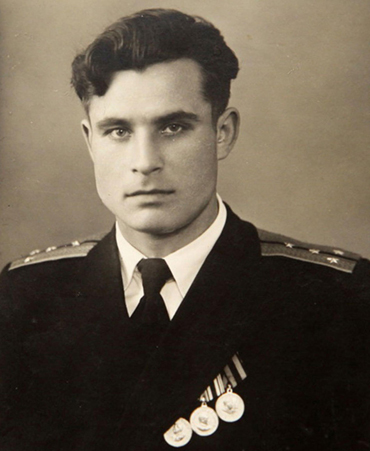
Vasili Arkhipov, 1960s
Two commanders decided to launch an attack with an atomic torpedo, as their previous interceptions of radio traffic indicated the readiness of American destroyers for combat operations, and there was now no radio connection with Moscow. Only Arkhipov managed to remain calm and convinced his colleagues not to shoot until they received an order from the High Command.
If a nuclear torpedo had been launched from the submarine, the Soviet Union would give the order to put into operation Soviet nuclear weapons against London and Germany. Pentagon plans in the US were called SIOP – Single Integrated Operation Plan. The plan called for 5.5 thousand nuclear missiles to be launched on communist targets (including China and Albania).
Lessons from the crisis of 1962, in the form of rules of conduct and decision-making by the parties to the conflict:
Lesson 1. The language of the ultimatum can be effective, but not in the case of negotiations now with Russia (then the USSR).
Lesson 2. During the escalation of the crisis, effective communication channels and non-ordinary negotiators are needed that can find unexpected but working solutions.
Lesson 3. On all sides involved in the conflict, you need firmness and honesty in following the accepted agreements.
Lesson 4. Leaders of the parties involved in the conflict require the ability to recognize the interests of other parties and, if necessary, to compromise.
Lesson 5. Unconditional respect for participants in the negotiation process (besides, this is some guarantee of saving self-esteem in case of loss).
Lesson 6. At the head of the interests of each side there must be the interests of the nation, and not of individual “elites”, especially interests with a criminal odor.
Lesson 7. If one of the parties decides to use lies or slander, misinformation and a large-scale information operation based on lies, this party is doomed to failure.
All three leaders of the countries participating in the Cuban crisis followed these rules of conduct and decision-making and the world was able to breathe a sigh of relief.
Syrian Knot in the Prism of the Cuban Crisis
American President Donald Trump, apparently, remembers that story with the Cuban crisis, because he also gave 48 hours to the world for thought, will the US hit or not hit Syria. Trump followed up his initial warning with an ominous tweet about sending new “smart” missiles with another telling tweet. After threatening Russia, Trump tried to back down by implying all America really wants is to help Russia build their economy! And, of course, stop the arms race the West has arguably already lost.
Unable to decipher Trump, now not only Florida is rushing about in search of a refuge, but the inhabitants of planet Earth feel defenseless and weak in the face of a terrible catastrophe that can break out at any moment!
And why the US should certainly hit Syria, is not even discussed amid conflicting claims of a supposed new chemical attack on civilians. The main thing – to hit or not to hit. With the consequences of the strike, apparently, we will have to deal with later.
The main difference between the Syrian crisis and the Cuban missile crisis in 1962 is that it involves multiple participants in each of the opposing sides. The interests of the parties and participants are intertwined in a complex matrix. On the one hand: The United States, Israel, Saudi Arabia, Qatar, Great Britain, France, on the other – Syria, Iran, Russia, Turkey and Iraqi Kurds. All parties holding common, and at the same time distinctly contradictory, national interests.
The complexity of the matrix of interests is exacerbated by the diplomatic crisis as absurd accusations by the British leadership that Russia poisoned spy Skripal and his daughter. This followed by the expulsion of Russian diplomats throughout the Western alliance – all except Israel who cited its own national interests as the deciding factor to not expel any Russian diplomats.
During the Cuban crisis, informal contacts between the resident Russian KGB agent Feklisov and journalist Scalli prevented a global catastrophe, but now the Russian ambassador to the United States is denied contacts with US politicians by the US. Then why are there any diplomatic services?
The tragedy and unpredictability of the situation in the world is aggravated by the fact that not everyone who makes final decisions are known to us. Who are they, these leaders of the “deep state”? Of course, it will be too late to ask about the responsibility of those who will destroy this monstrous and yet such a beautiful world, but still…
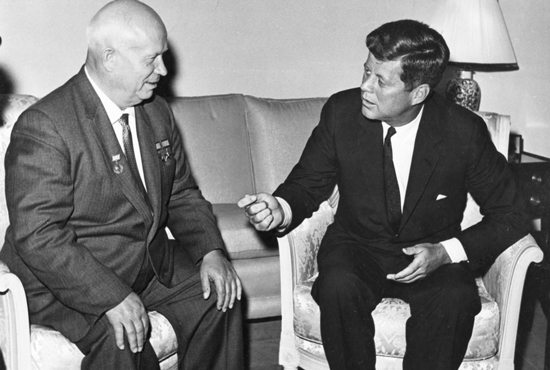
U.S. President Kennedy meeting with Soviet leader Khrushchev, June 1961
Comparing the role of leaders in the Cuban and Syrian crises, we can note that John Kennedy, in comparison with Donald Trump, looks a much more responsible and sober statesman, although in those days he was only 45 years old. Keeping the “hawks” in check and trying to understand the role of the USSR in history, Kennedy managed to overcome the ideological rejection of the Soviet system to make the right decision in favor of a peaceful resolution of the conflict.
Conversely, Vladimir Putin seen in the image of Nikita Khrushchev looks a much more powerful politician in building a slow wait-and-see strategy, and then taking rapid unexpected decisions that many times lead to victories. A vivid example of this behavior is the operation of annexing Crimea to Russia.
With regard to their predecessors, they have a striking difference. If Khrushchev practically renounced Stalin and the achievements of that era, Putin is in no hurry to anathematize neither Gorbachev, nor Yeltsin, although the burden of the tragic events of the destruction and plunder of the country fell on his shoulders.
But one thing in common is their desire to help those small countries that do not have enough strength to protect themselves from a powerful enemy. Although both Syria and Cuba successfully fought against a powerful aggressor, the protection and assistance of the USSR, and now Russia, were the determining factor in maintaining the sovereignty of these countries.
Comparing Assad and Castro, we can only admire the inner strength and courage of the two leaders, who are completely devoted to their peoples and who never betrayed the interests of their country.
If the Syrian crisis ends with a victory of justice without a global catastrophe, this will confirm the end of the unipolar world, the acknowledgement of movement towards a multipolar world order without threats from the former hegemon. This is why the stakes are so high and the losers appear so disparate.
Conclusion
Most thinking Americans are alarmed at the possible consequences of Trump’s precarious situation. Who is behind Mueller, who is already squeezing his fingers on Trump’s throat? Is this somehow related to the events of 9/11 and the role of Israel in that history? How are Russian oligarch Mikhail Khodorkovsky, Putin’s avowed personal enemy and one of Russia’s top robbers in the 1990, Mueller and the Bank of New York connected?
The biggest question in this whole knot: are the people who are in power today able to eliminate those who are responsible for acts of betrayal of the country in the events of 9/11 and the catastrophe that continues to this day?
Stockholm Syndrome: Is Trump really in charge, or has he been taken hostage?
There is hardly any way to describe the current fiasco in Washington other than to paint it as sheer insanity. With Trump becoming dangerously unstable due to domestic threats from Special Prosecutor Mueller and external forces from Israel to launch yet another attack on Syria, and follow up with invasion of Iran, the question is: “Is Trump being held hostage?”
And, if so, how is it possible to rescue him and save the world from certain war? To answer the principal question, here are the four key components that generally lead to the development of Stockholm syndrome:
– A hostage’s development of positive feelings towards their captor;
– No previous hostage-captor relationship;
– A refusal by hostages to co-operate with police forces and other government authorities;
– A hostage’s belief in the humanity of their captor, for the reason that when a victim holds the same values as the aggressor, they cease to be perceived as a threat.
Obviously, Trump qualifies for Stockholm syndrome on all these factors except one: he has an extensive previous hostage-captor relationship with international Banksters, international organized crime, and Zionists. This alone argues strongly Trump is not a hostage, but an active participant.
The importance of answers to these questions is obvious. Looking at the Syrian crisis unfolding before our eyes, every American citizen should ask themselves:
“– Does this war with Syria serve my country’s needs, do I have to go to war with Russia, China and Iran?
– What future awaits us after this war and is this the future we want?
– If the war does begin, what will happen to me and my family, especially our children?
– Can we rely on an untrustworthy president, bound tightly by seemingly unresolvable issues, capable of fulfilling his sworn devotion to America’s interests, given his financial, political, mental viability?
– Is he able to make the right decisions on the brink of the abyss?”
yogaesoteric
April 20, 2018
